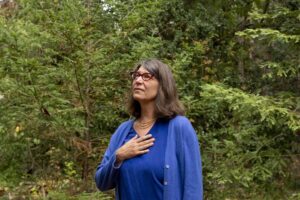Assisted death is legal in California, but some patients die waiting. A new bill could help

Will Forest’s battle with an unclassified motor neuron disease progressed far more quickly than anyone expected. The 65-year-old Santa Cruz resident was still playing disc golf last December; by the spring, his bodily function was diminishing so rapidly that he feared he might suffocate or choke on his own saliva.
Not wanting to spend his final months in terror, his wife said, Forest turned to California’s 5-year-old assisted death law, which allows terminally ill patients to obtain a lethal prescription and end their lives on their own terms. But as provisions of the law designed to prevent misuse turned into obstacles for Forest, he nearly missed his chance, as potentially thousands of other Californians also have.
“We barely got this right,” said his wife, Catherine Sonquist Forest, herself a physician who has trained doctors across the state in the assisted death law.
Forest’s primary doctor was part of a Catholic health care network that, due to religious objections, does not offer assisted death under the law, which is voluntary. Though Forest eventually connected to a different physician through the specialized care he received at another clinic, the wait for each appointment took weeks.
During his second visit to the doctor in May, further delayed by a mandatory 15-day waiting period, Forest made a final request for the lethal medication. That was the last time he left the house; he ingested the pill a month and a half later.
“How cruel at the end of his life, and for me to be spending my time, and his precious time, on this,” his widow said.
Once unthinkable, assisted death has established itself as a widely accepted option at the end of life since first becoming available to Californians in June 2016. But it remains a rare act: Only about 400 people on average die each year in the state by taking the doctor-prescribed drug.
Now, halfway through a decade-long trial run, state legislators are moving to streamline the assisted death process and remove some of the barriers that advocates say have prevented the law from becoming more widely used, particularly among low-income residents and people of color. Read more >>>